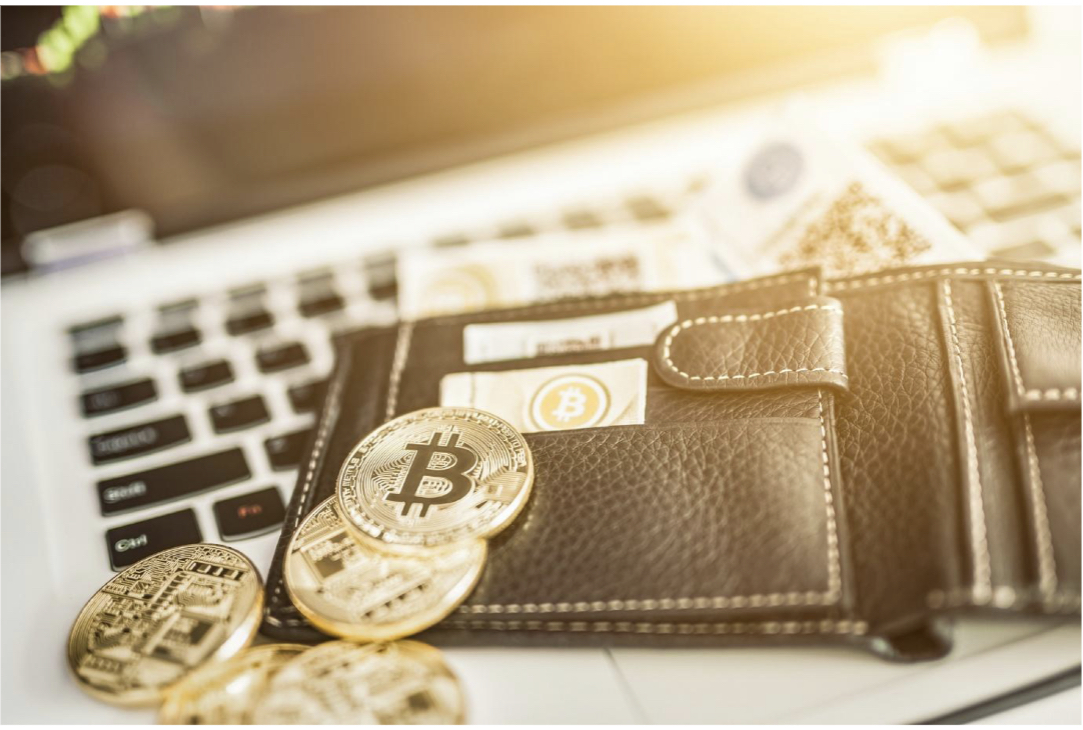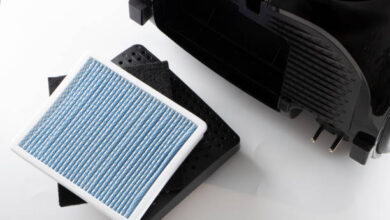What Is a Bitcoin Deposit Address?

We all have that friend that told us to buy bitcoin back in 2016. Back then, prices for an individual bitcoin ranged from around $400 to $900. In 2017 prices surged. And in 2021, bitcoin hit an all-time high at $68,000.
Anyone who bought and hold back then has made a lot of money. Many have even retired thanks to their bitcoin investments.
But bitcoin hasn’t stopped. Many people that its rapid adoption will see it continue growing in value in the coming months and years. Are you ready to make your first bitcoin deposit so that you stop missing the boat?
Then it’s time to set up a crypto wallet and buy your first bitcoin. In order to buy it, you need to know what your bitcoin address is. To do anything with crypto, you need to know what wallet addresses are. Keep reading below to learn all about the importance of a crypto address.
How Cryptocurrency Works
Cryptocurrencies are digital currencies built for the internet. There is no physical representation for bitcoin or other cryptocurrencies. They were built for the digital age.
Cryptocurrency is either released into circulation by mining, like bitcoin. Or it’s released all at once when the cryptocurrency is first created.
You can buy and sell it online, or send it directly from peer to peer, even if the recipient is across the world.
What Is a Bitcoin Deposit Address?
A bitcoin address is what you can provide people when they send you money. It represents your digital wallet.
It’s a public identifier for where you hold your bitcoin funds. But bitcoin deposit addresses are temporary. You can only use them for a single transaction. This helps with security.
Your actual wallet address is made up of two components; your private key and your public key.
The private key proves you own the wallet and the funds inside. You should never share this with anyone. Anyone who knows your private key can withdraw the funds from the wallet.
The public key is the other half. It’s the address you can provide to other people so they can send funds to you.
No one can extract funds from your wallet using only the public key.
So what is the difference between your public key and a deposit address? Your public key is your permanent bitcoin wallet address.
But each time you want to deposit crypto into your bitcoin wallet, you generate a temporary, hashed version of your public key, which is your bitcoin deposit address.
A basic bitcoin address example is between 26 and 35 characters. But more often than not, you’ll use a QR code to display your deposit address so no one needs to type it in.
Types of Bitcoin Deposit Addresses
There are three main types of bitcoin deposit addresses available, depending on what type of wallet you are using.
The original deposit address is the legacy address, also known as Pay-to-PubKey-Hash (P2PKH). These start with “1” and are case-sensitive. Every bitcoin wallet supports this type of address.
The Pay to script hash (P2SH) address starts with the number “3” instead. These are more efficient and result in lower transaction fees.
Bech32 addresses start with “bc1” and these addresses are not case sensitive. They also result in lower transaction fees. But certain wallets and exchanges limited the acceptance of these addresses.
What Is a Bitcoin Wallet?
So what is a bitcoin or crypto wallet? This is the place where you actually store your cryptocurrencies. It’s kind of like a bank account, represented by a bank account number.
When you buy crypto on a cryptocurrency exchange, funds are held in your exchange account. You don’t technically have custody over the funds. And buying on an exchange doesn’t trigger a blockchain transaction.
So the blockchain doesn’t recognize that you own that cryptocurrency. Most crypto investors choose to hold their funds in a private wallet instead, maintaining full custody over their crypto and private keys.
The common saying is “not your keys, not your crypto.” It’s not really your crypto until you move it to your own virtual crypto location.
Types of Crypto Wallets
There are three main types of crypto wallets available. they all function the same when it comes to sending and receiving crypto. But the level of security can vary.
Regardless of which one you use, you’ll have a dedicated bitcoin public key where you store your funds.
And every different type of cryptocurrency you add to your wallet will use a different address as well. Ethereum and bitcoin exist on two different networks.
So within your wallet of choice, you’ll send bitcoin to one wallet address and Ethereum to another, yet both are still stored in the same wallet.
Browser Wallets
Browser wallets are the easiest to use online. If you move crypto around a lot, participate in Defi, play blockchain-based games, or buy NFTs, you’ll need a browser wallet to do so.
These are a form of software wallet that you install on your internet browser rather than on your computer. They work with common browsers like Google Chrome or Firefox.
The most common is MetaMask, though this wallet doesn’t actually support bitcoin. It supports many other crypto networks like Ethereum or Avalanche.
These are considered the least secure type of wallet because they are “hot.” They are always connected to the internet, and various types of malicious attacks could expose you to a hack.
Software Wallets
Software wallets are the most common. These are free apps you can download to your smartphone or computer.
For each type of crypto you want to store, you’ll have a different wallet address within your software wallet. Most wallets can store bitcoin and dozens, sometimes hundreds of other cryptocurrencies as well.
These are more secure than browser wallets. But since they live on your device, which is almost always connected to the internet, there is still some risk due to malicious activity.
Hardware Wallets
Hardware wallets are the most secure type of wallet. These will store your crypto and your NFTs in a separate storage device offline.
You only plug your hardware into your computer when you need to move stuff off of the wallet. You can send crypto to your hardware wallet without plugging it in.
For anything to leave your wallet, it needs to be plugged into your computer. The password would need to be entered, and each individual transaction needs to be confirmed by pressing buttons on the physical hardware wallet.
So it’s not possible for online hackers to siphon funds from a hardware wallet unless they also steal the physical wallet AND know the passcode.
Given that you can buy an ultra-secure Ledger hardware wallet for under $100, it makes sense for anyone serious about their crypto to purchase one, especially as scams run rampant in the crypto community.
How to Buy Bitcoin In Person
So now you have a better understanding of how bitcoin wallets work. But how do you actually buy bitcoin? There are a few ways.
The easiest is to visit your nearest bitcoin ATM. You can find bitcoins ATM online. There is probably one close to where you live or work, as they exist around the country in very convenient locations.
Once you arrive, you can use either cash or in some instances, a debit card to purchase bitcoin and other cryptocurrencies. But if it’s your first time using that ATM, you’ll need to create an account.
To do so, you’ll need to scan your photo ID as part of the identity verification process (required by financial institutions). You’ll then provide your bitcoin deposit address to the ATM.
If you have a wallet app on your smartphone, click on deposit. It should generate a one-time QR code to scan at the ATM. You can then insert your funding method.
When the transaction confirms, your wallet will receive the bitcoin.
How to Buy Bitcoin Online
You can also buy bitcoin without getting off the couch. Rather than visiting an ATM, you’ll go to an online cryptocurrency exchange. The most popular is Coinbase, but there are many other options if you want to shop around.
You’ll also need to create an account, providing both your ID and social security number. Online, it can take minutes, hours, and sometimes days to complete the verification process.
Once verified, you can link a funding method. Direct transfers from your bank account are generally free. Or you can buy with a debit card for a fee.
Your crypto is then displayed on your dashboard. But it’s stored within the crypto exchange at this point.
How to Send Bitcoin top Your Wallet Address
Want to send bitcoin to your own private wallet? It’s very easy to do.
From your bitcoin wallet, whether on your phone or computer, you’ll select deposit. It will either show a text address that you can copy or a QR code you can scan.
Then, on the crypto exchange, you’ll click withdraw. It will prompt you to enter the receiving bitcoin deposit address. Paste it in and confirm that it matches your wallet address.
Confirm the transfer and then wait for it to finish. Sometimes it can take a few minutes, depending on network activity. The blockchain can only accommodate so many transactions per minute.
So you might not see the funds right away, but they will show up as soon as it’s confirmed on the blockchain.
Other Types of Crypto Addresses
Crypto gets confusing pretty fast. One of the hardest things to understand is how different cryptocurrencies interact (or don’t interact) with one another.
Bitcoin is built on its own blockchain. Only bitcoin works within the bitcoin network. And only bitcoin can be sent to a bitcoin wallet address.
If you try sending a different cryptocurrency to a bitcoin wallet address, you risk losing it forever.
Ethereum is the second most valuable cryptocurrency. But this blockchain is unique in that it was created to be the foundation for other developers to build on top of.
So ETH is the native cryptocurrency of the Ethereum blockchain. You can send ETH to your ETH deposit address. But other cryptocurrencies are also built on the Ethereum blockchain (known as tokens, not coins).
Any token that lives on Ethereum is considered an ERC-20 token. These include Maker (MKR) Basic Attention Token (BAT), and many others.
You’ll have one main Ethereum wallet address. And you can send all of these cryptocurrencies to that single wallet address.
Within your Ethereum wallet, you’ll see a list of any assets you own on Ethereum. Ethereum addresses always start with “0x” and contain 42 characters.
Wrapped Cryptocurrencies
Cryptocurrencies that live on different blockchains don’t work with other blockchains. For example, if you bought an old Playstation game, you wouldn’t be able to play it on an Xbox. It’s platform-specific.
It’s similar when it comes to cryptocurrency. But there are some workarounds you need to know about.
Most people want to invest in bitcoin, but the bitcoin blockchain is limited in functionality. People want to move bitcoin around on other networks.
So there is an option to “wrap” your bitcoin. Wrapped bitcoin is a separate token on the Ethereum blockchain. It’s an asset that represents your original blockchain, but now you can move it around on other networks.
Your wrapped asset is pegged to the value of the original. So if you wrap 2 bitcoins, you would have two wrapped bitcoins (wBTC) worth the same amount.
You can swap those wrapped tokens back for the original thing at any time. The original is stored in a vault, and the wrapped one is released onto the new network.
There are many other examples of wrapped tokens as well. They allow investors and users to use various cryptocurrencies in the Defi ecosystem.
This allows them to generate yield with various apps, rather than letting their bitcoin sit in a vault, collecting dust.
Start Investing in Crypto Today
Now that you know what a bitcoin deposit address is, how to buy bitcoin, and how to use it, it’s time to get started for yourself.
Millions of investors worldwide are investing in cryptocurrencies and making a lot of money doing so. While there are certainly risks to crypto, there are also risks associated with ignoring crypto and missing out on impressive gains.
Looking for more tips like this? Visit our blog now to keep reading.




